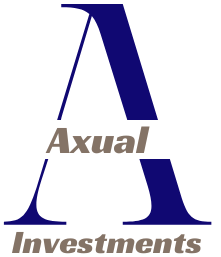Suze Orman’s “Ultimate Retirement Guide for 50+” is a comprehensive resource designed to help individuals in their 50s plan wisely for retirement. In today’s ever-changing landscape, retirement requires careful consideration and strategic decision-making. This guide offers valuable insights and practical tips to ensure a successful and fulfilling retirement.
Key Takeaways:
- Start planning for retirement in your 50s to maximize your future financial security.
- Consider the unique challenges faced by individuals in their 50s and tailor your retirement strategies accordingly.
- Take advantage of tools like retirement calculators to accurately determine your financial needs in retirement.
- Explore options for maximizing Social Security benefits and delaying your benefits to increase monthly payments.
- Build a strong retirement portfolio by carefully considering various investment options.
Retirement Planning in Today’s Ever-Changing Landscape
Retirement today is more complex than ever before, and individuals in their 50s need to navigate a variety of challenges. Suze Orman’s “Ultimate Retirement Guide for 50+” provides valuable strategies tailored specifically to 50-year-olds, offering insights and techniques to help maximize retirement savings and secure a successful future.
One of the key retirement strategies for 50-year-olds highlighted in Orman’s guide is the importance of effective retirement saving techniques. With the constantly evolving landscape of retirement options, it’s crucial to stay informed and make smart financial decisions. The guide dives deep into investment options, exploring various avenues individuals can take to ensure their retirement funds are growing steadily.
Orman’s guide also emphasizes the significance of having a personalized retirement plan that takes into account individual goals, risk tolerance, and time horizon. By understanding these factors and aligning them with suitable retirement investment options, individuals can optimize their savings and work towards a financially stable retirement.
Retirement Saving Techniques
In addition to investment strategies, the guide delves into retirement saving techniques that can make a significant difference in building a robust retirement fund. It provides practical advice on how to maximize contributions to retirement accounts, take advantage of employer matching programs, and utilize catch-up contributions available for individuals aged 50 and above.
It’s never too late to start planning and saving for retirement. By following the retirement strategies outlined in Suze Orman’s guide, individuals in their 50s can take control of their financial future and make the most of their retirement years.
| Retirement Strategies for 50-Year-Olds | Benefits |
|---|---|
| Investing in low-cost index funds | Offers diversified exposure to the stock market with lower fees |
| Maximizing contributions to retirement accounts | Allows for tax advantages and accelerated growth of retirement savings |
| Exploring alternative investments | Diversifies investment portfolio and potentially increases returns |
| Utilizing tax-efficient strategies | Minimizes tax liabilities and maximizes after-tax returns |
By incorporating these retirement strategies for 50-year-olds and implementing prudent retirement saving techniques, individuals can take significant steps towards a financially secure and fulfilling retirement.
The Importance of Financial Security in Retirement
In Suze Orman’s “Ultimate Retirement Guide for 50+”, she highlights the crucial importance of financial security in retirement. As individuals approach their golden years, it becomes essential to plan and prepare for a stable and fulfilling retirement. This section explores the key aspects of retirement income planning, including the use of retirement calculators to accurately determine financial needs.
Retirement income planning involves assessing various income sources, including Social Security benefits, pensions, investments, and personal savings. It is crucial to have a clear understanding of one’s financial needs in retirement and develop a strategy to meet those needs. Retirement calculators are valuable tools that help individuals estimate their expenses and determine how much income they will require during their retirement years.
By considering factors such as expected lifespan, healthcare costs, and lifestyle choices, retirement calculators provide individuals with a realistic view of their financial situation. They can help identify potential gaps in income and guide the development of a comprehensive retirement plan. It is important to regularly review and update these calculations as circumstances change to ensure continued financial security in retirement.
Overall, understanding the importance of financial security in retirement and utilizing retirement calculators to plan for income needs are vital steps in ensuring a comfortable and worry-free retirement. By taking the time to assess one’s financial situation and plan accordingly, individuals can approach their retirement years with confidence and peace of mind.

Maximizing Social Security Benefits
When planning for retirement, setting clear goals is essential. One of the most important aspects of retirement planning is maximizing Social Security benefits. Understanding the options available and making informed decisions can significantly impact your retirement income.
Delaying Social Security benefits is a strategy that many individuals in their 50s and beyond should consider. By delaying your benefits, you can increase your monthly payments and potentially receive a higher lifetime benefit. This can be especially beneficial if you have other sources of income to rely on during the initial years of retirement.
However, it’s crucial to carefully evaluate your individual circumstances before making a decision. Factors such as your health, financial needs, and overall retirement goals should be taken into account. Consulting with a financial advisor or using retirement planning tools can help you analyze the potential benefits of delaying Social Security benefits in your specific situation.
Maximizing Social Security Benefits: How to Decide
To maximize your Social Security benefits, it’s important to understand the impact of delaying your benefits. Let’s take a look at a hypothetical example:
| Retirement Age | Monthly Benefit | Total Benefits Received by Age 85 |
|---|---|---|
| 62 | $1,500 | $480,000 |
| 67 | $2,000 | $480,000 |
| 70 | $2,640 | $475,200 |
In this example, delaying benefits from age 62 to age 70 results in higher monthly payments and a slightly lower total benefit amount received by age 85. However, by age 77, the total benefits received from delaying would surpass the amount received if benefits were claimed at age 62. It’s important to consider your life expectancy and financial needs when deciding on the best time to claim Social Security benefits.
Remember, delaying Social Security benefits is not the right choice for everyone. It’s essential to carefully evaluate your own circumstances and consult with a financial advisor to make an informed decision that aligns with your retirement goals.
Building a Strong Retirement Portfolio
When it comes to planning for retirement, one of the key considerations is building a strong retirement portfolio. This involves making informed investment decisions that will help grow your savings over time and provide you with a steady income during your retirement years. Suze Orman’s “Ultimate Retirement Guide for 50+” offers valuable insights into various retirement investment options that can help you achieve your financial goals.
One effective retirement investment option mentioned in Orman’s guide is diversifying your portfolio. This means spreading your investments across different asset classes such as stocks, bonds, real estate, and mutual funds. Diversification can help reduce risk and maximize potential returns. Orman also highlights the importance of regularly reviewing and rebalancing your portfolio to ensure it aligns with your changing financial goals and risk tolerance.
“Diversifying your retirement portfolio is like building a sturdy foundation for your financial future. By spreading your investments across different assets, you can mitigate risk and enhance growth potential.”
Another retirement investment option to consider is investing in index funds or exchange-traded funds (ETFs). These investment vehicles track a specific market index or sector and offer broad market exposure at a lower cost compared to actively managed mutual funds. Orman’s guide explains the benefits of index funds and ETFs, providing readers with the knowledge they need to make informed investment decisions.
Table: Comparison of Retirement Investment Options
| Investment Option | Advantages | Disadvantages |
|---|---|---|
| Stocks |
|
|
| Bonds |
|
|
| Real Estate |
|
|
| Mutual Funds |
|
|
Ultimately, building a strong retirement portfolio requires careful consideration of your financial goals, risk tolerance, and time horizon. Suze Orman’s guide provides valuable information and insights into retirement investment options, helping individuals make informed decisions that align with their unique circumstances. Remember, it’s never too early or too late to start building a strong retirement portfolio.
Downsizing and Spending Wisely
One of the key considerations for individuals approaching retirement is downsizing their living arrangements and managing their expenses wisely. Downsizing not only reduces housing costs but also simplifies household maintenance and frees up funds for other retirement priorities. Suze Orman’s “Ultimate Retirement Guide for 50+” offers practical advice on downsizing effectively and making smart financial decisions to stretch retirement savings.
When considering downsizing, it’s essential to assess your current living situation and determine what you truly need in retirement. This may involve selling a larger home and moving into a smaller, more affordable property, or even exploring alternative housing options such as downsizing to an apartment or co-housing community. By reducing housing expenses, individuals can allocate more resources towards their retirement savings or other lifestyle goals.
In addition to downsizing, spending wisely in retirement is crucial for long-term financial security. Suze Orman’s guide provides insights into managing expenses effectively, including creating a budget, tracking spending, and prioritizing essential needs. By understanding and controlling their expenses, individuals can ensure that their retirement savings last and are not depleted prematurely.
“By downsizing and spending wisely in retirement, individuals can achieve a more comfortable and secure financial future.”
Ultimately, the key to downsizing and spending wisely in retirement is finding a balance between enjoying the present and planning for the future. Suze Orman’s guide offers practical tips and strategies to help individuals make informed decisions about their housing choices and financial priorities. By following these recommendations, individuals can navigate the complexities of retirement with confidence, knowing they have optimized their resources for a fulfilling and financially secure future.

Table: Comparing Housing Options for Downsizing
| Housing Option | Advantages | Considerations |
|---|---|---|
| Smaller Home | – Reduced maintenance – Lower utility costs – Potential for equity growth | – Moving costs – Possible need for renovations |
| Apartment | – Low maintenance – Amenities included – Affordable rent options | – Shared walls and noise – Limited control over property |
| Co-Housing Community | – Shared expenses – Sense of community – Shared amenities | – Limited privacy – Decision-making consensus |
| Retirement Community | – On-site amenities and activities – Assistance available if needed | – Monthly fees and assessments – Potential lack of independence |
Navigating Medicare and Healthcare Costs in Retirement
As individuals approach retirement, one of the most important aspects to consider is healthcare. Suze Orman’s “Ultimate Retirement Guide for 50+” offers valuable insights into navigating Medicare and managing healthcare costs in retirement. With rising medical expenses and a complex healthcare system, it’s crucial to have a clear understanding of Medicare and explore options like long-term care insurance.
Understanding Medicare Coverage
Medicare is a federal health insurance program for individuals aged 65 and older, as well as certain younger individuals with disabilities. Orman’s guide provides guidance on making informed decisions about Medicare coverage. It explains the different parts of Medicare, including Part A (hospital insurance), Part B (medical insurance), Part C (Medicare Advantage plans), and Part D (prescription drug coverage). Understanding the various components of Medicare can help individuals select the right coverage options that align with their healthcare needs.
Long-Term Care Insurance
Long-term care insurance is an important consideration when planning for healthcare costs in retirement. This type of insurance provides coverage for services such as nursing home care, assisted living, and in-home care. Orman’s guide explores the benefits of long-term care insurance and offers insights into choosing the right policy. By considering long-term care insurance as part of their retirement plan, individuals can protect their assets and receive the necessary care in the event of a chronic illness or disability.
It’s essential to be proactive in managing healthcare costs during retirement. By understanding Medicare coverage options and exploring long-term care insurance, individuals can make informed decisions that secure their healthcare needs and financial well-being. Suze Orman’s guide serves as a valuable resource in navigating these important aspects of retirement planning.

| Medicare Coverage Options | Benefits | Considerations |
|---|---|---|
| Medicare Part A | Covers hospital stays, skilled nursing care, and some home health services. | Requires individuals to have worked and paid Medicare taxes for a certain period. |
| Medicare Part B | Covers doctors’ visits, outpatient care, and preventive services. | Has a monthly premium and deductible that individuals must pay. |
| Medicare Part C | Includes coverage offered by private insurance companies, often with additional benefits. | Individuals need to carefully review the coverage and network of providers. |
| Medicare Part D | Provides prescription drug coverage. | Requires individuals to enroll in a standalone Prescription Drug Plan. |
| Long-Term Care Insurance | Covers expenses related to nursing home care, assisted living, and in-home care. | Premiums can be costly, and eligibility may depend on age and health. |
Creating a Guaranteed Income Stream in Retirement
One of the key aspects of retirement planning is ensuring a steady and reliable income stream throughout your retirement years. Suze Orman’s “Ultimate Retirement Guide for 50+” offers valuable strategies for creating a guaranteed income stream that can provide financial security and peace of mind. By implementing these strategies, you can better protect yourself against economic uncertainties and enjoy a comfortable retirement.
One option for creating a guaranteed income stream is through the use of annuities. Annuities are financial products that offer regular payments over a specified period or for the rest of your life. They provide a reliable income source and can be tailored to your individual needs, whether you prefer a fixed or variable payout. Annuities offer a way to supplement other retirement income sources, such as Social Security or pension payments, and can help ensure a steady cash flow throughout your retirement.
Another strategy for creating a guaranteed income stream is by utilizing other financial instruments, such as dividend-paying stocks or bonds. These investments can provide a regular income through periodic dividends or interest payments. A well-diversified portfolio that includes these income-generating assets can contribute to a reliable income stream in retirement.
Table: Types of Annuities
| Type | Description |
|---|---|
| Immediate Annuities | Provide an immediate income stream after a lump-sum payment and continue for a specific period or for life. |
| Fixed Annuities | Offer a fixed interest rate and guaranteed payments over a specified period. |
| Variable Annuities | Provide the opportunity for growth through market-based investments, offering the potential for higher returns but also greater risk. |
| Indexed Annuities | Combine features of both fixed and variable annuities, with returns linked to a specific index’s performance. |
Quote: “Creating a guaranteed income stream is essential for a comfortable retirement. By utilizing annuities or other income-generating investments, individuals can ensure a reliable source of income throughout their retirement years.” – Suze Orman
By exploring different options and considering your own financial goals and risk tolerance, you can create a personalized strategy for generating a guaranteed income stream in retirement. It’s important to consult with a financial advisor to determine the most suitable approach based on your unique circumstances and to ensure your plan aligns with your long-term financial objectives.

Essential Money Moves in Your 50s and 60s
As you enter your 50s and 60s, it’s crucial to make strategic financial moves that will set you up for a secure retirement. Suze Orman’s “Ultimate Retirement Guide for 50+” offers valuable advice on how to navigate this critical phase of your financial journey. By focusing on these essential money moves, you can maximize your retirement savings and ensure a brighter future.
1. Evaluate Your Retirement Goal
One of the first steps in securing your financial future is to assess and refine your retirement goal. Consider the lifestyle you envision during retirement and determine the amount of money you will need to support it. Take into account factors such as healthcare expenses, travel plans, and any additional sources of income you may have. By setting a clear retirement goal, you can work towards it more effectively.
2. Boost Your Retirement Contributions
In your 50s and 60s, take advantage of catch-up contributions to boost your retirement savings. These additional contributions allow you to contribute more money to your retirement accounts, such as your 401(k) or IRA. Maximize these opportunities to make up for any earlier shortfalls and accelerate your savings growth.
3. Diversify Your Investments
As you progress towards retirement, it’s important to review and diversify your investment portfolio. Consider allocating your assets across different investment vehicles, such as stocks, bonds, and real estate. Diversification helps mitigate risk and ensures that your investments align with your risk tolerance and retirement timeline.
| Financial Move | Description |
|---|---|
| Review Insurance Coverage | Assess your insurance policies, including life insurance, health insurance, and long-term care insurance. Make any necessary adjustments to ensure adequate coverage during retirement. |
| Create an Estate Plan | Consult with an estate planning attorney to create a comprehensive estate plan. This may include drafting a will, setting up trusts, and designating beneficiaries. |
| Consider Downsizing | Explore the possibility of downsizing your home to reduce housing expenses and free up equity. Downsizing can also simplify your lifestyle and provide additional funds for retirement. |
“In your 50s and 60s, strategic financial moves have the power to transform your retirement. Evaluate your goals, boost your savings, and diversify your investments to secure a brighter future.” – Suze Orman
By implementing these essential money moves in your 50s and 60s, you can enhance your financial position and pave the way for a successful retirement. Suze Orman’s guide offers additional insights and actionable steps to help you navigate this important phase of your financial journey. Remember, it’s never too late to take control of your finances and secure the retirement you deserve.

Long-Term Financial Planning for Retirement
When it comes to retirement planning, having a long-term financial strategy is crucial. Suze Orman’s “Ultimate Retirement Guide for 50+” offers valuable insights into various retirement investment options and the importance of having the right financial documents in place. Let’s explore some key aspects of long-term financial planning for retirement.
Retirement Investment Options
One important aspect of long-term financial planning is understanding the different retirement investment options available. Suze Orman’s guide dives into topics such as Roth IRAs, 401(k)s, and Health Savings Accounts (HSAs). These investment tools can provide individuals with tax advantages and the potential for long-term growth. By understanding these options and how they align with your retirement goals, you can make informed decisions that will benefit you in the long run.
Table: Retirement Investment Options
| Investment Option | Description |
|---|---|
| Roth IRAs | A retirement account with tax-free withdrawals in retirement. |
| 401(k)s | An employer-sponsored retirement savings plan. |
| Health Savings Accounts (HSAs) | An account used to save for medical expenses in retirement. |
Must-Have Documents
As part of long-term financial planning for retirement, it is essential to have the right legal and financial documents in place. Suze Orman emphasizes the importance of having an updated will, power of attorney, and healthcare proxy. These documents ensure that your wishes are carried out and that your loved ones have the necessary authority to make decisions on your behalf if needed.
Table: Must-Have Documents
| Document | Description |
|---|---|
| Will | A legal document that outlines how your assets will be distributed after your death. |
| Power of Attorney | A legal document that grants someone the authority to handle your financial affairs. |
| Healthcare Proxy | A legal document that designates someone to make healthcare decisions on your behalf. |
By understanding retirement investment options and having the necessary documents in place, you can set yourself up for a secure and successful retirement. Suze Orman’s guide provides valuable insights and guidance to help individuals make informed decisions and take control of their long-term financial planning.

Living Your Ultimate Retirement Life
Retirement is not just about financial security; it’s about embracing a new chapter in your life. Suze Orman’s “Ultimate Retirement Guide for 50+” goes beyond the numbers and offers valuable insights on how to live your ultimate retirement. It’s a time to explore new passions, set new goals, and make the most of the freedom that retirement brings. Here are some key tips to help you navigate this exciting phase of life.
Exploring New Roles and Hobbies
Retirement offers the opportunity to discover new interests and pursue passions that may have taken a backseat during your working years. Whether it’s volunteering, starting a new business, or diving into a long-lost hobby, this is the time to find fulfillment outside of a traditional job. Use this newfound freedom to explore new roles and hobbies that bring you joy and purpose.
Consider joining local clubs or organizations that align with your interests, taking classes or workshops to learn new skills, or even pursuing a part-time job or consultancy gig in a field you’re passionate about. Embrace the possibilities that retirement offers, and you may find a whole new world of fulfillment and personal growth.
Lowering Living Costs and Stretching Savings
Living your ultimate retirement also involves making smart financial choices to ensure your savings last. Look for ways to lower living costs without compromising on your quality of life. Consider downsizing your home, leveraging senior discounts, and exploring alternative healthcare options to reduce expenses.
Additionally, take a strategic approach to managing your retirement savings. Work with a financial advisor to develop an investment plan that balances growth and income generation. Explore annuity options that provide a guaranteed income stream and consider diversifying your investment portfolio to mitigate risk.
Staying Active and Socially Engaged
Retirement is a great time to focus on your physical and mental well-being. Make an effort to stay active by engaging in regular exercise and pursuing activities that promote mental stimulation. Join fitness classes, take up meditation or yoga, or explore outdoor activities like hiking or gardening.
Furthermore, maintaining a social network is crucial for a fulfilling retirement. Seek out opportunities to connect with like-minded individuals through community groups, social clubs, or even online communities. Engaging in social activities not only provides a sense of connection but also contributes to overall well-being and happiness during retirement.
Remember, retirement is a journey, and it’s up to you to make it an extraordinary one. Embrace the freedom, explore new passions, and focus on living your ultimate retirement life. Suze Orman’s guide is a valuable resource that can help you navigate this exciting phase and make the most of the opportunities that retirement brings.

Conclusion
Suze Orman’s “Ultimate Retirement Guide for 50+” is a comprehensive resource designed to provide essential retirement advice for individuals in their 50s. This guide offers practical tools, strategies, and insights to help maximize retirement savings and navigate complex financial decisions, ensuring a fulfilling and secure retirement.
With retirement planning becoming increasingly complex, Suze Orman’s guide addresses the unique challenges faced by individuals in their 50s. It provides actionable advice and valuable retirement planning tips to help you make informed decisions that align with your financial goals.
By exploring topics such as maximizing Social Security benefits, building a strong retirement portfolio, downsizing effectively, and managing healthcare costs, this guide equips you with the necessary knowledge to make smart financial moves in your 50s and beyond.
Whether you’re looking to create a guaranteed income stream, plan for long-term financial security, or simply make the most of your retirement years, Suze Orman’s “Ultimate Retirement Guide for 50+” offers the essential advice you need to confidently navigate the road ahead.
FAQ
What does Suze Orman’s “Ultimate Retirement Guide for 50+” offer?
Suze Orman’s guide provides actionable advice and practical tools for planning wisely for retirement in today’s complex landscape.
Who is the guide specifically tailored for?
The guide addresses the unique challenges faced by individuals in their 50s and offers valuable retirement planning tips.
What topics does Suze Orman cover in her guide?
Suze Orman covers topics such as saving techniques, investment options, income planning, Social Security benefits, building a strong retirement portfolio, downsizing, healthcare costs, creating a guaranteed income stream, essential money moves, long-term financial planning, and living retirement life.
Does the guide provide practical tools for retirement planning?
Yes, the guide includes practical tools such as retirement calculators to help individuals accurately determine their financial needs in retirement.
Does Suze Orman provide guidance on maximizing Social Security benefits?
Yes, Suze Orman offers advice on setting retirement goals and explains the benefits of delaying Social Security to increase monthly payments.
Does Suze Orman provide information on retirement investment options?
Yes, Suze Orman provides information on various retirement investment options, helping individuals make informed decisions about where to allocate their savings.
Does the guide address the importance of downsizing and spending wisely in retirement?
Yes, Suze Orman offers practical advice on how to downsize effectively and make smart financial decisions to stretch retirement savings.
Does Suze Orman provide guidance on managing healthcare costs in retirement?
Yes, Suze Orman provides insights into navigating Medicare and managing healthcare costs, including guidance on making informed decisions about Medicare coverage and exploring the option of long-term care insurance.
Does Suze Orman offer strategies for creating a guaranteed income stream in retirement?
Yes, Suze Orman explores options such as annuities and other financial instruments that can provide a steady source of income during retirement.
Does the guide provide information on essential money moves for individuals in their 50s and 60s?
Yes, Suze Orman offers strategies and specific actions to take to ensure financial security and maximize retirement savings during this crucial period.
Does Suze Orman provide guidance on long-term financial planning for retirement?
Yes, Suze Orman explores topics such as Roth IRAs, 401(k)s, HSAs, and emphasizes the importance of having the necessary legal and financial documents in place.
Does Suze Orman provide insights on how to enjoy retirement while maintaining financial stability?
Yes, Suze Orman encourages individuals to embrace and enjoy their ultimate retirement life, providing insights on how to lower living costs, find new roles, and make the most of retirement.
Is the “Ultimate Retirement Guide for 50+” a comprehensive resource?
Yes, the guide is a comprehensive resource for individuals in their 50s seeking essential retirement advice, offering practical tools, strategies, and insights to help maximize retirement savings, navigate complex financial decisions, and achieve a fulfilling and secure retirement.

